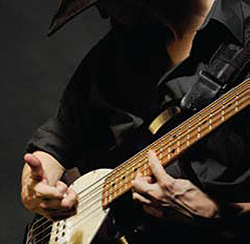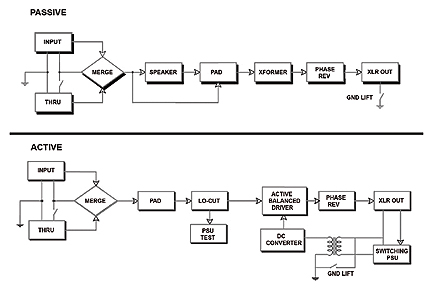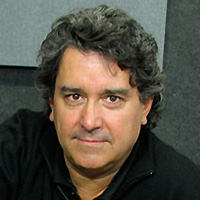What type of direct (DI) box works best for bass guitar? The answer is easy: it depends. In fact, more than anything else, it depends on the type of bass that the DI is going to be used with.
When it comes to signal flow, there are two types of bass guitars: passive and active. The first electric basses, i.e., the original Fender Precision, were passive, and in fact still are today.
They employed magnetic pickups to generate the signal – as the string moves in and out of the magnetic field, a low-level alternating current is generated.
The signal from the bass travels through the cable to the amplifier, which in turn increases the voltage level so that it is sufficiently powerful to drive another electromagnetic device: a loudspeaker. In essence, the signal is amplified by a series of buffers that work together to increase the voltage and/or current as needed.
For years this worked well, until bands like the Beatles messed everything up! The problem was that the fans at those concerts were so loud that the bass amp was unable to produce enough ‘thump’ to overtake the screaming. The solution: send the bass guitar signal through the PA system.
Eureka! The amazing direct box was born. The first direct boxes were basically hand-made black boxes that had transformers inside.
These passive devices would tap a signal off the bass and split it so that part of the sound would go to the bass amp on stage, and the rest of it would go to the PA system some 50 to 100 feet away.
Origins Of Active
As the PA systems got larger, so did the performance venues (or vice versa). Eventually, things escalated to the point where concerts moved to arenas and stadiums.
And bass players complained because they noticed that when their bass was connected to all of the long cable runs in these larger systems, the sound changed. It was not as beefy, and there was no more thud.
This shouldn’t have come as a surprise—if you take the signal from a magnetic pickup and ask it to drive hundreds of feet of cable in addition to the bass amp on stage, the level will be weaker. And it will not sound the same. This effect is known today as “loading.”
The solution: buffer the bass signal. In other words, incorporate a small amplifier inside the direct box so that 99 percent of the signal is directed to the bass amp and 1 percent is split off to drive the PA. And thus the active DI box was born! Ye old Fender P-Bass was happy—the thud had returned.
















